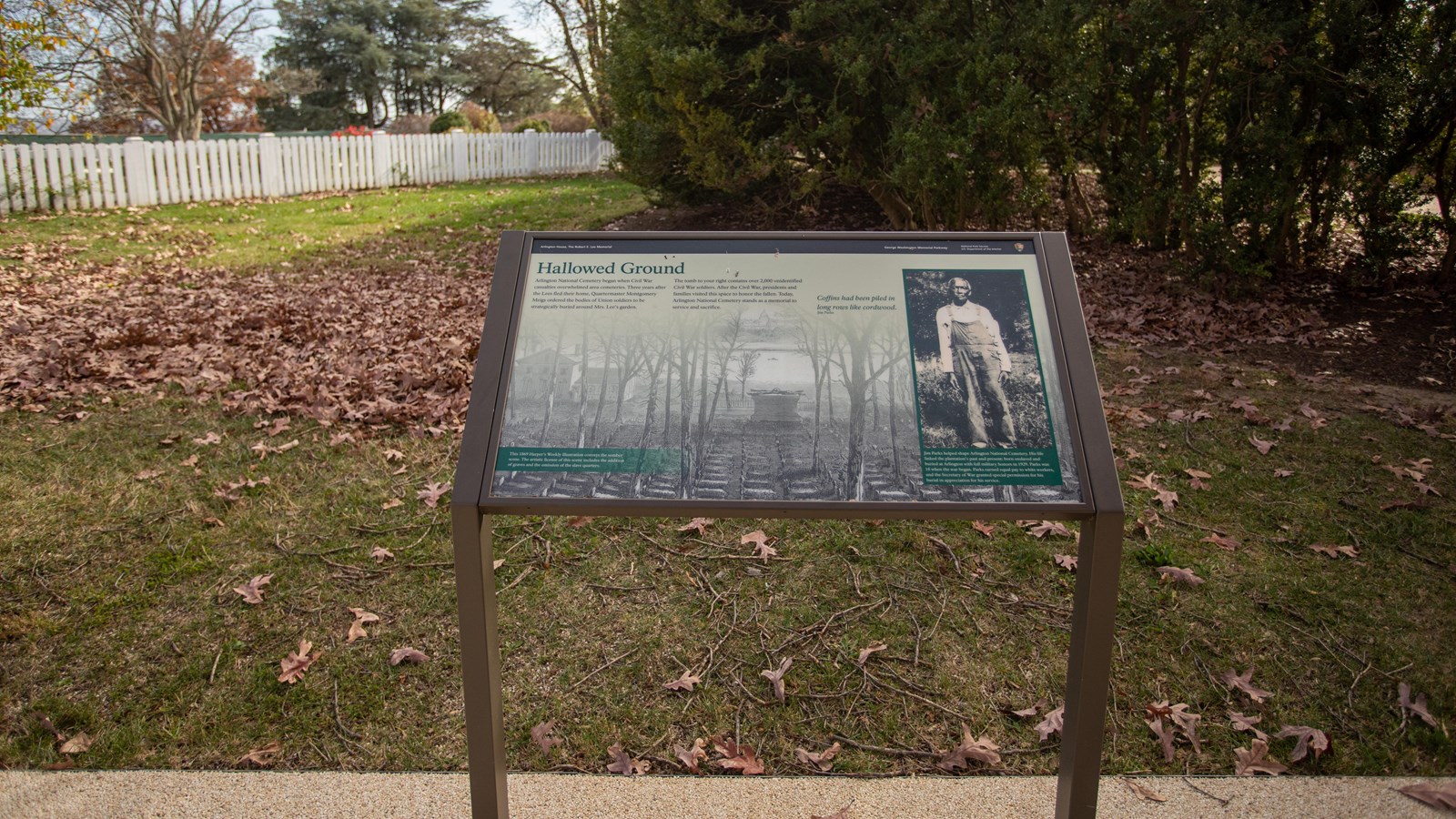Last updated: April 23, 2024
Place
Information Panel: Hallowed Ground

NPS / Claire Hassler
Historical/Interpretive Information/Exhibits
The tomb to your right contains over 2,000 unidentified Civil War soldiers. After the Civil War, presidents and families visited this space to honor the fallen. Today, Arlington National Cemetery stands as a memorial to service and sacrifice.
This 1869 Harpers Weekly illustration conveys the somber scene. The artistic license of this scene includes the addition of graves and the omission of slave quarters.
"Coffins had been piled in long rows like cordwood."
Jim Parks
Jim Parks helped shape Arlington National Cemetery. His life linked the plantation's past and present: born enslaved and buried at Arlington with full military honors in 1929. Parks was 18 when the war began. Parks earned equal pay to white workers, and the Secretary of War granted special permission for his burial in appreciation for his service.
